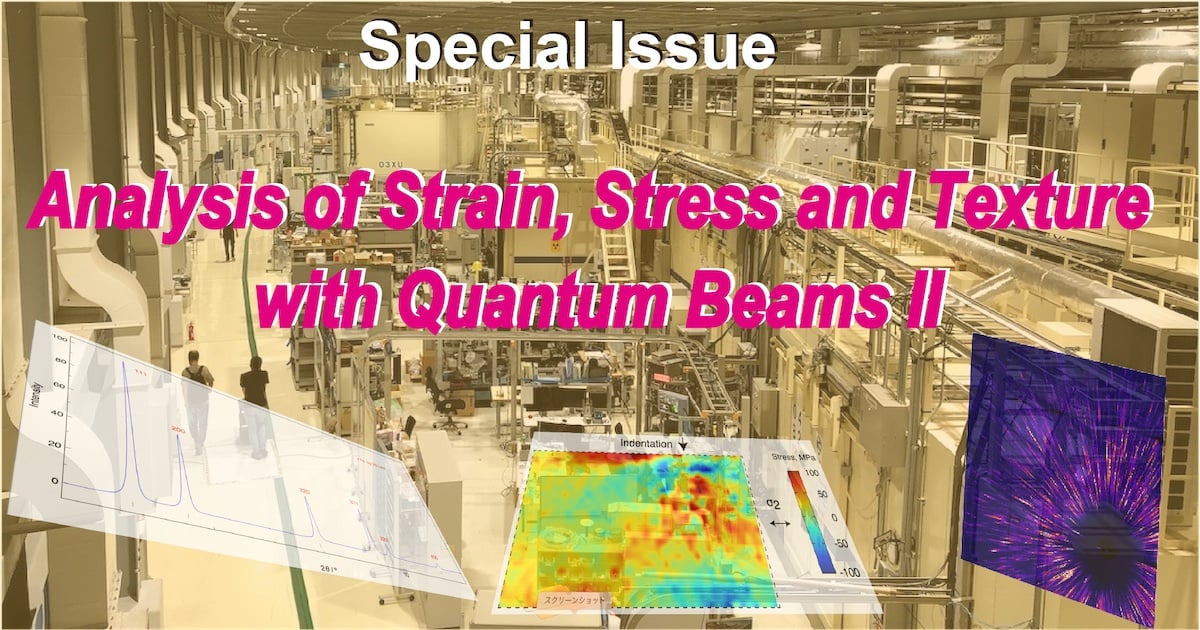- 1.7Impact Factor
- 2.8CiteScore
- 27 daysTime to First Decision
Analysis of Strain, Stress and Texture with Quantum Beams, 2nd Edition
This special issue belongs to the section “Engineering and Structural Materials“.
Special Issue Information
Dear Colleagues,
In recent years, the development of material behavior simulation has been remarkable. When we look at realistic deformations and stress maps based on simulation analysis results, we feel that we have understood the behavior of a material. From the viewpoint of stress analysis, when the simulation and the actual stress coincide, the material evaluation is correct. Therefore, the progress of experimental stress analysis and evaluation is very important, but has been faced with many challenges.
Synchrotron radiation and neutrons as quantum beams are excellent means of experimental stress analysis, and the research and industrial application of this technology are important. By utilizing quantum beams, it is now possible to know the stresses and strains of coarse grains and welded metals, which were previously difficult to measure. Following on from the previous Special Issue, "Analysis of Strain, Stress and Texture with Quantum Beams", I hope that new research on material evaluation using quantum beams will be contributed to this Special Issue.
If you are interested in contribution, please feel free to contact the Editorial Office at sunny.sun@mdpi.com or qubs@mdpi.com.
Prof. Dr. Kenji Suzuki
Guest Editor
Manuscript Submission Information
Manuscripts should be submitted online at www.mdpi.com by registering and logging in to this website. Once you are registered, click here to go to the submission form. Manuscripts can be submitted until the deadline. All submissions that pass pre-check are peer-reviewed. Accepted papers will be published continuously in the journal (as soon as accepted) and will be listed together on the special issue website. Research articles, review articles as well as short communications are invited. For planned papers, a title and short abstract (about 250 words) can be sent to the Editorial Office for assessment.
Submitted manuscripts should not have been published previously, nor be under consideration for publication elsewhere (except conference proceedings papers). All manuscripts are thoroughly refereed through a single-blind peer-review process. A guide for authors and other relevant information for submission of manuscripts is available on the Instructions for Authors page. Quantum Beam Science is an international peer-reviewed open access quarterly journal published by MDPI.
Please visit the Instructions for Authors page before submitting a manuscript. The Article Processing Charge (APC) for publication in this open access journal is 1600 CHF (Swiss Francs). Submitted papers should be well formatted and use good English. Authors may use MDPI's English editing service prior to publication or during author revisions.
Keywords
- residual stress and strain
- texture
- diffraction methods with synchrotron X-ray and neutron beam
- stresses in manufacturing processes
- internal stresses and microstructures
- residual stresses in advanced materials
- imaging and XCT
- line profile analysis
- modeling

Benefits of Publishing in a Special Issue
- Ease of navigation: Grouping papers by topic helps scholars navigate broad scope journals more efficiently.
- Greater discoverability: Special Issues support the reach and impact of scientific research. Articles in Special Issues are more discoverable and cited more frequently.
- Expansion of research network: Special Issues facilitate connections among authors, fostering scientific collaborations.
- External promotion: Articles in Special Issues are often promoted through the journal's social media, increasing their visibility.
- e-Book format: Special Issues with more than 10 articles can be published as dedicated e-books, ensuring wide and rapid dissemination.

